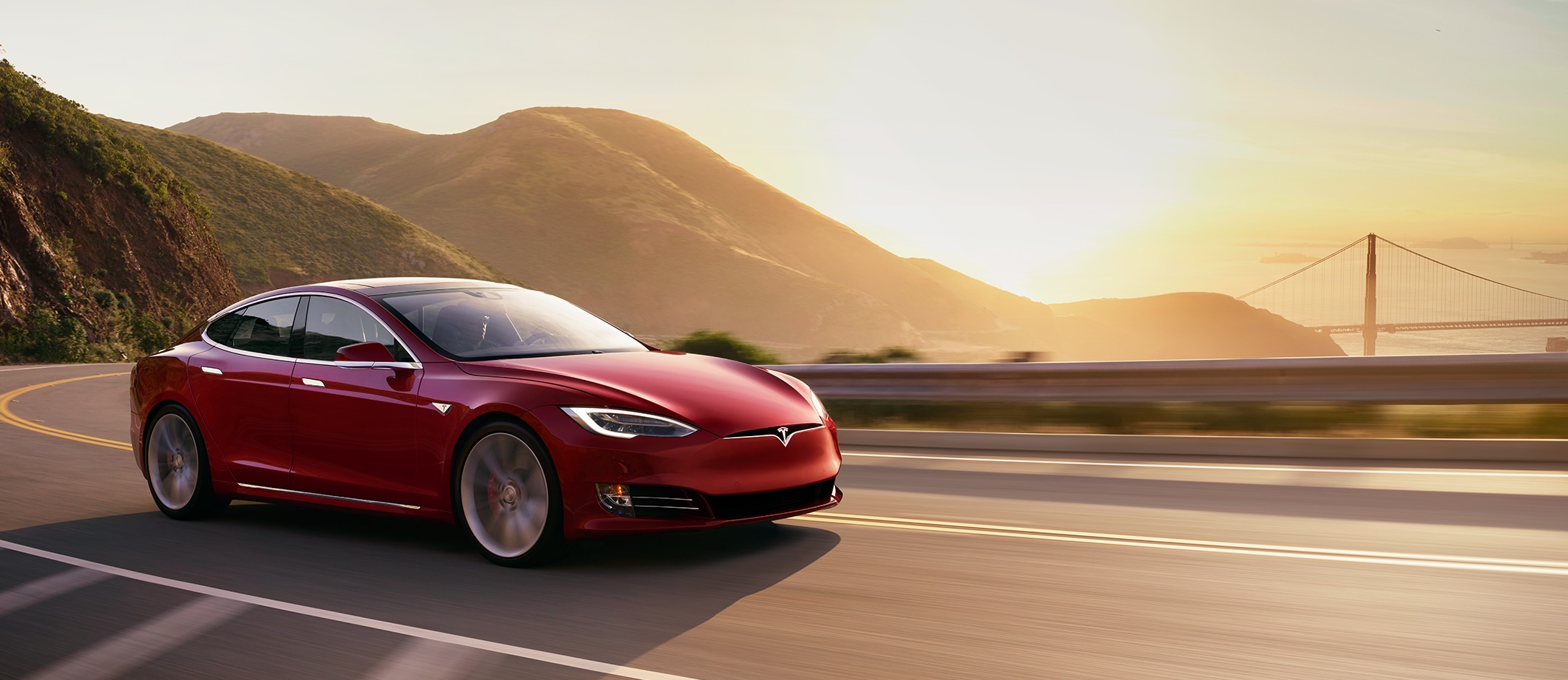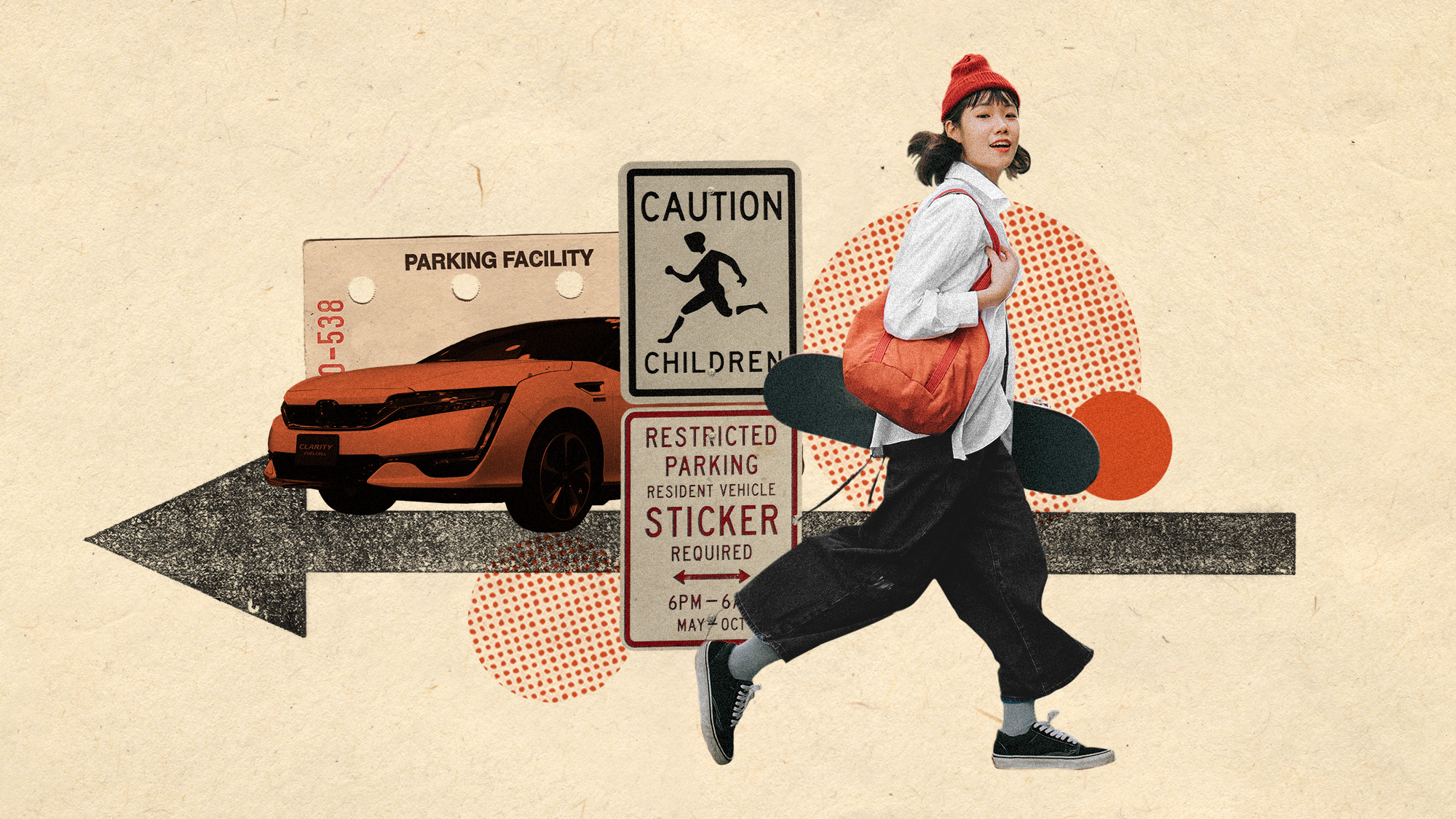Porsche Taycan vs. Tesla Model S: which is king of the EVs?
German firm enters the electric car ring, but it faces stiff competition from US rival

The electric car market is quickly becoming a fiercely competitive arena, with the world’s leading manufacturers all rushing to get a zero-emission vehicle on to the road.
Tesla has established itself as one of the leaders of the pack. Its current range-topping product, the Model S (below), has been the poster child of the so-called electric car revolution, thanks to its supercar-rivalling performance and long battery range.

But Porsche also wants a slice of the pie. Like its rival, the new Taycan (top) is a four-door EV with coupe-inspired looks and impressive performance specs. It’s also significantly newer, as the Model S’s roots date back to the original car from 2012.
The Week
Escape your echo chamber. Get the facts behind the news, plus analysis from multiple perspectives.

Sign up for The Week's Free Newsletters
From our morning news briefing to a weekly Good News Newsletter, get the best of The Week delivered directly to your inbox.
From our morning news briefing to a weekly Good News Newsletter, get the best of The Week delivered directly to your inbox.
Can the German carmaker mount a challenge to the Elon Musk-backed US juggernaut that is Tesla?
Here’s how the two cars compare:
Interior

Inside the Model S you’ll find there are “hardly any switches or buttons”, WhatCar? notes. That’s because the car is predominantly controlled via a “massive 17.0in colour touchscreen”, which is “actually friendlier to use than some of the smaller touchscreen systems in many mainstream cars”.
A free daily email with the biggest news stories of the day – and the best features from TheWeek.com
Interior quality, however, isn’t quite up to the high levels offered by many of its rivals, the reviews site says. Buyers coming from a Porsche or BMW may find the materials “pretty poor and flimsier than you might expect for a car in this price bracket”.

The Taycan’s cabin, meanwhile, comes with a more conventional dashboard and centre console layout. That being said, CarBuyer says the Taycan’s interior is still “cutting-edge”, as the analogue instrument panel has been replaced by a digital display and there’s even a touchscreen ahead of the front passenger.
“Fit and finish is as good as you’d hope from Porsche,” the motoring site says, “and a major advantage over the cheaper Tesla Model S interior.”
On the road

Both models are somewhat heavier than their combustion-engined counterparts, thanks to their weighty battery systems and electric motors. However, the battery systems on both cars are stored below the cabin, keeping weight low for better agility.
With this in mind, Top Gear says the Model S “reveals itself to be a decent steer” along a twisty stretch of road. “There’s no feel to the steering, but it’s accurate and quick enough to make the S feel pretty agile, especially given the size of the thing.”
The Model S also benefits from Tesla’s Autopilot suite of semi-autonomous systems, including automatic steering, accelerating and braking, the motoring site adds. It’s available as standard, though an advance system can be added for £5,800.
Porsche also has its own range of semi-autonomous functions dubbed “InnoDrive”, says Auto Express. The package includes automatic emergency braking, plus lane keeping and overtaking assistance.
Flick them off, though, and the Taycan flows from corner to corner with “unexpected precision”, according to Evo. The steering is “remarkably accurate, if lacking in any detailed feedback, and you sense there’s a strong dynamic car within the Taycan’s DNA”.
Battery range, performance and price

The Model S with the most stamina is, remarkably, the cheaper of the two versions on offer. Opt for the £77,200 Long Range car and buyers get 375 miles of power on a single charge, which has been measured using the most recent - and more reliable - WLTP (Worldwide Harmonised Light Vehicle Test Procedure) standards.
Long Range cars are capable of sprinting from 0-60mph in 3.7 seconds, which matches most supercars on sale, and hits a top speed of 155mph. That rises to 2.4 seconds and 162mph on the £91,800 Performance version, though range drops to 365 miles.
Porsche’s entry-level Taycan Turbo gets a maximum range of 279 miles from a single charge, along with a 0-62mph time of 3.2 seconds and a top speed that’s limited to 161mph, says Auto Express.
The range-topping Turbo S is 0.4 seconds faster to 62mph than the regular Turbo, the magazine says, yet retains the same 161mph top speed limit. Range, however, falls to 257 miles.
The Taycan is also more expensive than the Model S, with prices starting at £115,858 for the Turbo and rising to £138,826 on the Turbo S.
Verdict

While it’s natural to draw a comparison between the two EVs, there are some key differences that set the cars apart.
The Taycan offers a more sporty approach to the electric car world, particularly as Porsche is widely considered to be one of the best sports car makers on the planet. This, however, means the Taycan carries a considerable premium over its rival, and can’t quite match it on battery range.
The Model S, meanwhile, has an impressive range and is crammed with technology inside, but it’s let down by a cabin that can’t match the quality of its rivals.
It’s worth noting, however, that Tesla intends to launch a faster version of the Model S with the company’s so-called “Plaid” powertrain next year.
Tesla claims that prototype models fitted with the new powertrain could lap the 12.9-mile Nurburgring circuit in Germany some 20 seconds faster than the Taycan, which clocked seven minutes and 42 seconds.
For now, though, it seems the Taycan is the EV of choice for sports car lovers, but commuters may want to opt for the Model S.
-
 Biggest political break-ups and make-ups of 2025
Biggest political break-ups and make-ups of 2025The Explainer From Trump and Musk to the UK and the EU, Christmas wouldn’t be Christmas without a round-up of the year’s relationship drama
-
 Why 2025 was a pivotal year for AI
Why 2025 was a pivotal year for AITalking Point The ‘hype’ and ‘hopes’ around artificial intelligence are ‘like nothing the world has seen before’
-
 The best drama TV series of 2025
The best drama TV series of 2025the week recommends From the horrors of death to the hive-mind apocalypse, TV is far from out of great ideas
-
 How will Ford reinvent EV manufacturing to compete with China?
How will Ford reinvent EV manufacturing to compete with China?Today's Big Question Henry Ford's assembly line system is being replaced
-
 Why Bezos' new pickup could be a 'wrecking ball' in EV industry
Why Bezos' new pickup could be a 'wrecking ball' in EV industryToday's Big Question Slate Auto's no-frills approach is a 'potential Tesla killer'
-
 Judge rejects Elon Musk's $56B pay package again
Judge rejects Elon Musk's $56B pay package againSpeed Read Judge Kathaleen McCormick upheld her rejection of the Tesla CEO's unprecedented compensation deal
-
 Is the world ready for Tesla's new domestic robots?
Is the world ready for Tesla's new domestic robots?Talking Points The debut of Elon Musk's long-promised "Optimus" at a Tesla event last week has renewed debate over the role — and feasibility — of commercial automatons
-
 Why the UK phone signal is so poor
Why the UK phone signal is so poorUnder The Radar Having trouble connecting? A lack of investment, planning rules and even your home could be to blame
-
 Wall Street tumbles on poor tech results
Wall Street tumbles on poor tech resultsSpeed Read US markets had their worst day since 2022 as Tesla and AI stocks dropped
-
 Gen Z doesn't want cars
Gen Z doesn't want carsUnder the Radar Olivia Rodrigo may have been excited to get her driver's license, but many young people are less enthused by car culture
-
 Apple kills its secret electric car project
Apple kills its secret electric car projectSpeed Read Many of the people from Project Titan are being reassigned to work on generative AI